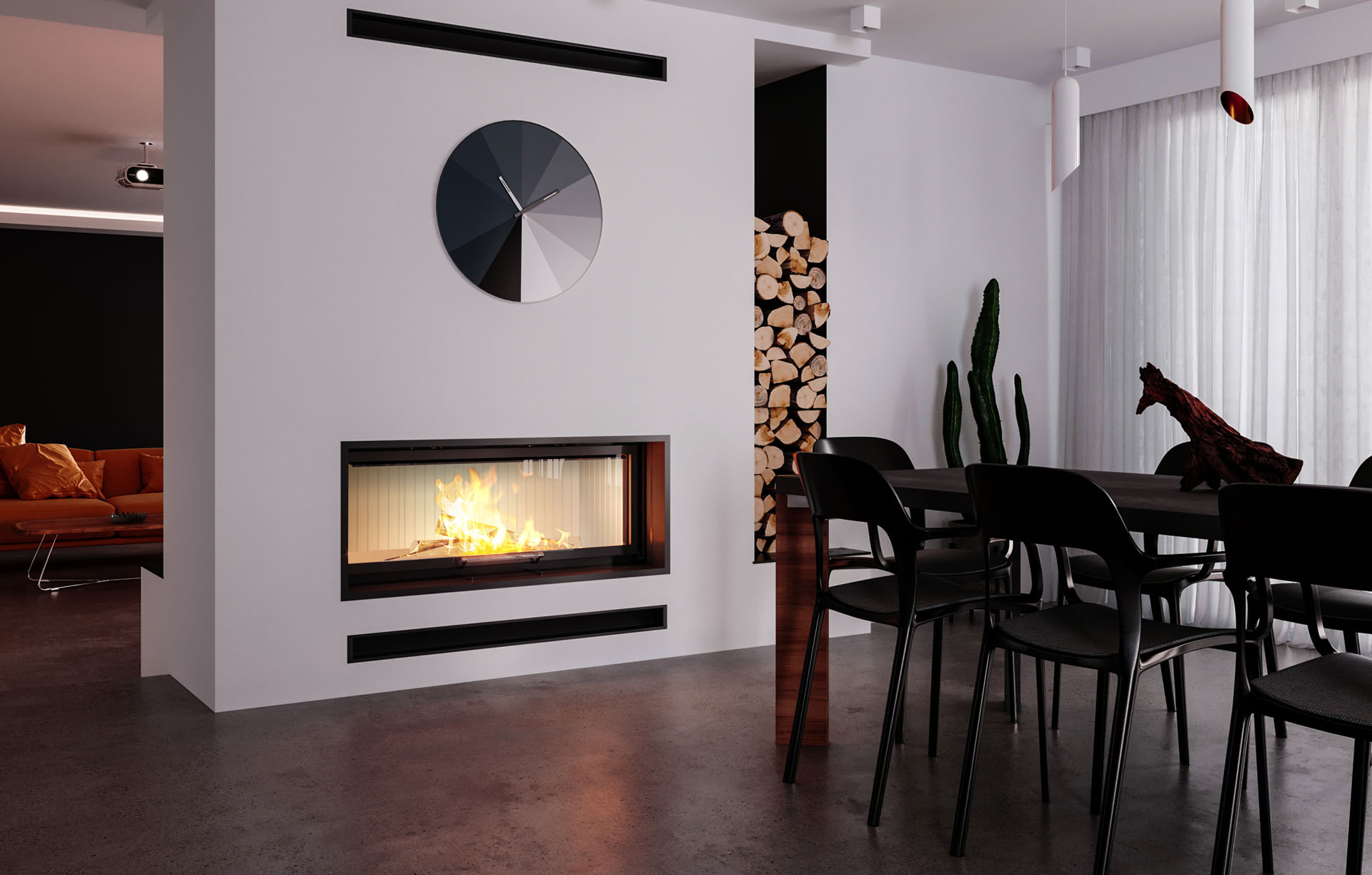
Fireplace with hot air distribution system (DGP). How does it work?
A fireplace does not have to heat only the room in which it is located. Thanks to the DGP system, modern models allow energy to reach other interiors as well. The use of this technology makes the fireplace a full-fledged additional source of heat for the entire home. It is worth getting to know the DGP technology better.
The idea of fireplaces with DGP system is not complicated. The idea is to recover the heat wasted in ordinary inserts, and then transport it to other parts of the house. The amount of unused energy in fireplaces without hot air distribution is sometimes really large, because even low-power models can generate several hundred percent more heat than it results from the needs of a given room. Effect? The area directly next to the hearth is almost unbearably warm, while other parts of the living room can be cold.
In fireplaces with DGP system, heat is recovered from both the insert itself and the chimney pipe. The heated air goes to the ducts through which it is distributed to other rooms.
DGP system - Gravitational and with forced circulation.
The circulation of hot air inside the system may be due to gravity or forced by artificial means.
The first solution works well in the case of small installations - it allows you to efficiently distribute the air to a distance of about 3 meters from the fireplace. Otherwise, before it reaches the mouth of the canal, it is already cooled, the degree of which depends on the distance traveled. This, in turn, translates into decreasing system efficiency with each centimeter.
If we plan to heat even more distant rooms in our house with a fireplace, the use of DGP technology with forced air circulation will be a better solution. With this solution, it is necessary to use a turbine that will suck in the heated air and then direct it to the channels that will distribute hot air to those more distant rooms in our house.
However, the price for the efficiency of such systems is higher operating costs (the turbine is powered by electricity), greater failure rate and sensitivity to power cuts.
What are the elements of the DGP system?
In order for the DGP system to work, it must include the following elements:
• an air inlet - should be installed in the outer wall of the house at a height that prevents snow or rain from entering the installation.
• external air ducts - it is the first air supply channel to the fireplace insert.
• throttles - thanks to them, the house does not cool down when the fireplace is not used.
• fireplace insert - everyone will be suitable, but there are already factory-set fireplaces adapted to work in the hot air distribution system, such as a cassette CUBO700 , CUBO800
• turbine (optional) - only used in systems with forced circulation.
What else is worth knowing about the DGP system?
Hot air ducts - can be made of fittings with a cross-section:
• round - do not cause problems during assembly and insulation, and also do not generate significant resistance to air transport. They work well in installations in attics and suspended ceilings.
• rectangular - apart from ceilings, they can also be installed in screeds. Their assembly is associated with certain difficulties - so it should be provided for (or preferably immediately carried out) at the stage of designing and building a house.
In addition, it is worth taking care of properly distributed air outletsbecause it is through them that the air enters individual rooms.
Air outlets can be located in the floor and ceiling, as well as in the lower or upper part of the walls. The most favorable heat distribution is obtained by placing them near the window and on the floor or next to it - in such cases the effects will be similar to those achieved with underfloor heating.
In case of any questions talk to our sales managers:
+48 800 880 030
k.styczen@stalko.com


